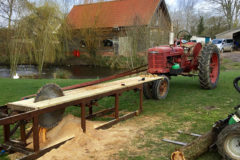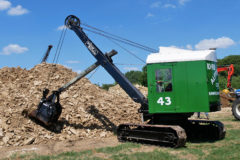Delving in the digging archives
Posted by Chris Graham on 9th March 2020
Nick Baldwin goes delving in his digging archives, this time in search of the French make, Willeme, among other interesting vehicles.
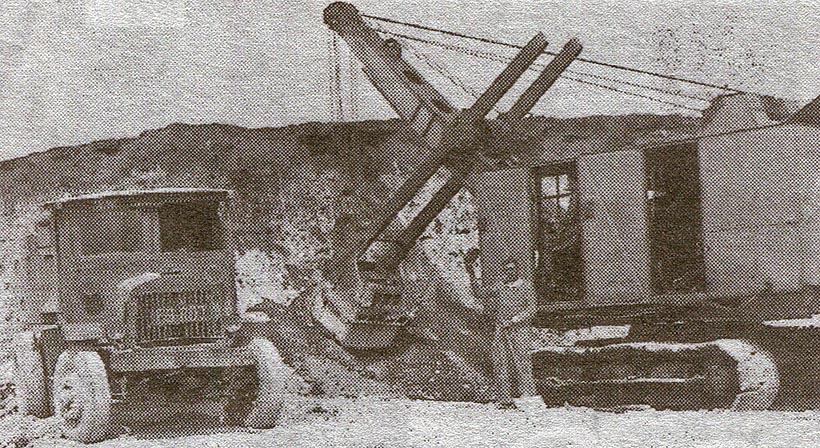
Delving in the digging archives: An unidentified shovel loads a Liberty lorry converted by Willeme, who also equipped it with pneumatics.
I’ve had a soft spot for Willeme off-road vehicles since encountering one from about 1950, fitted with a radiator badge that depicted the Statue of Liberty holding aloft a primitive lorry.
The explanation was that the business commenced in the 1920s, reconditioning US Army Liberty lorries made to a standardised design, by the likes of Gramm Bernstein, Selden, Pierce-Arrow, Garford, Republic and a lot of smaller players including Brockway and Sterling.
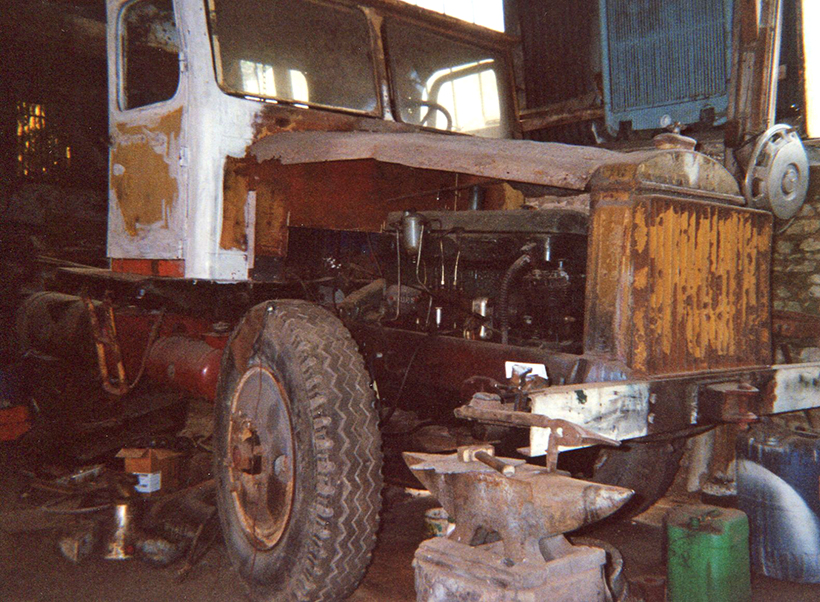
This mighty Willeme dumptruck was undergoing restoration, but was available as an on-going project.
Continental, Hercules and Waukesha jointly contributed to the engines, while other parts came from a pool of 100 firms. The Liberty was gearing up for massive output when the war ended, at which point around 10,000 had been made. Loads of them were in France, and Willeme was soon converting them for haulage and specialist roles. Solid-tyred crane carriers and heavy-duty tippers were widely used and, in the end, bigger vehicles evolved without Liberty input, but still with that proud radiator badge.
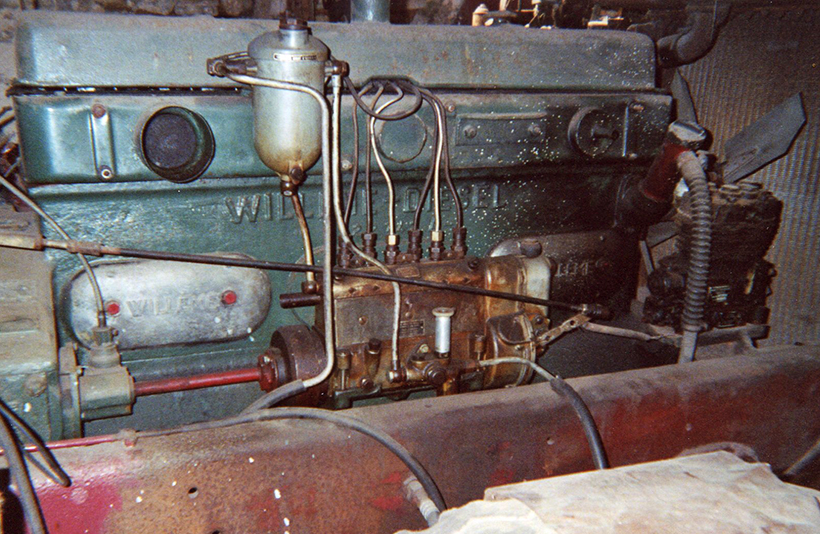
The Willeme diesel engine is believed to have had Deutz origins.
One day I’ll tell the fuller story but, in the meantime, I stumbled upon one of the massive, Euclid, 15-ton-sized 1950 Willemes for sale near Paris. My photographs hardly do justice to its size, which I suspect would make it over-width for road use. Perhaps that’s why only €2,500 was wanted for it, and I was sorely tempted.
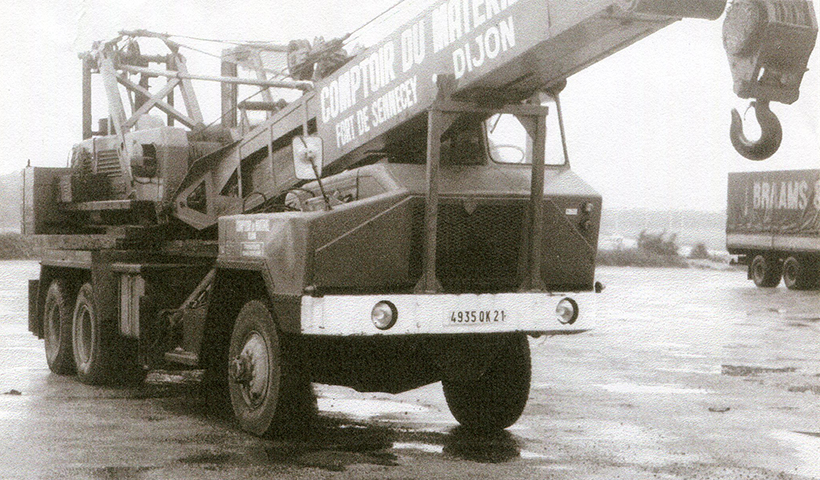
A PRP 6×6 crane carrier made from US Army lorry Second World War components.
An even cheaper solution to providing heavy-duty tippers after the Second World War, was provided by the most recent batch of orphaned, US equipment in France. Near Rouen, on the Seine, I encountered a classic Diamond T six-wheeler, fitted with dumptruck body that had been used in the reconstruction of Paris. Again, this one was for sale.
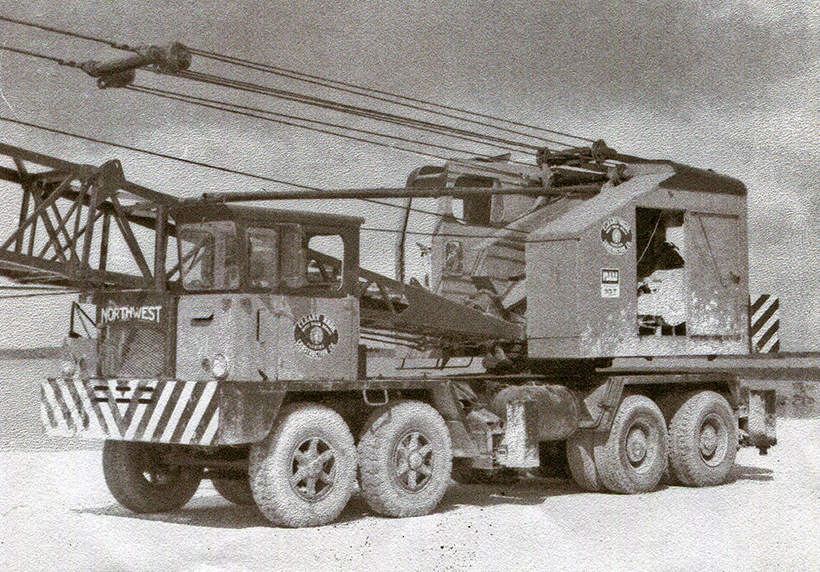
A Northwest 8×4 crane snapped in Key West, Florida. Its makers advertised extensively in International Construction, during the 1960s.
When Willeme finally expired in the 1970s, some of its models were resurrected by a mysterious firm called Perez & Raimond of Paris, under the initials ‘PRP’. This business had also started out by converting ex-military vehicles (from the Second World War) for civilian use, often fitting them with Detroit diesels.
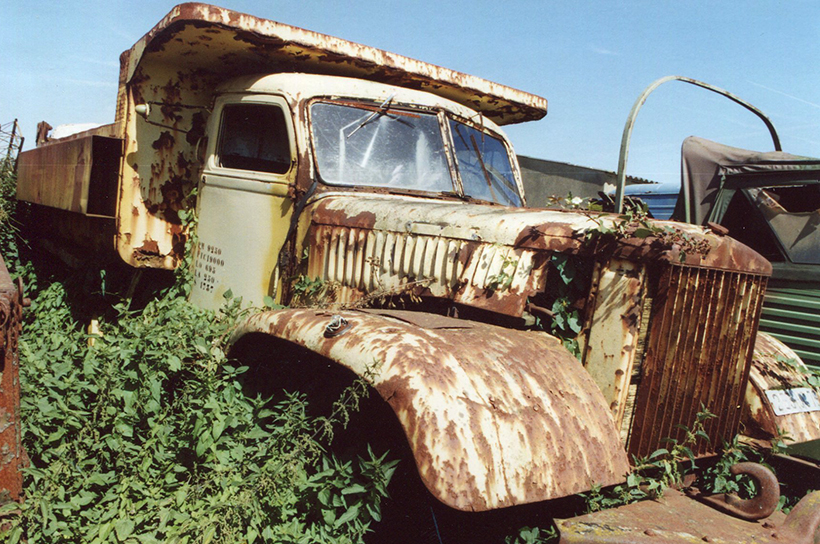
More at home hauling Second World War tanks but, afterwards, this Diamond T helped in the reconstruction of Paris.
Illustrated here is one of PRP’s pre-Willeme 6×6 crane carriers, made from American components. PRP was also an agent for German Schaeff excavators and loaders, British Arrow hydraulic road breakers and American Insley tracked excavators. But what became of them has, so far, eluded me.
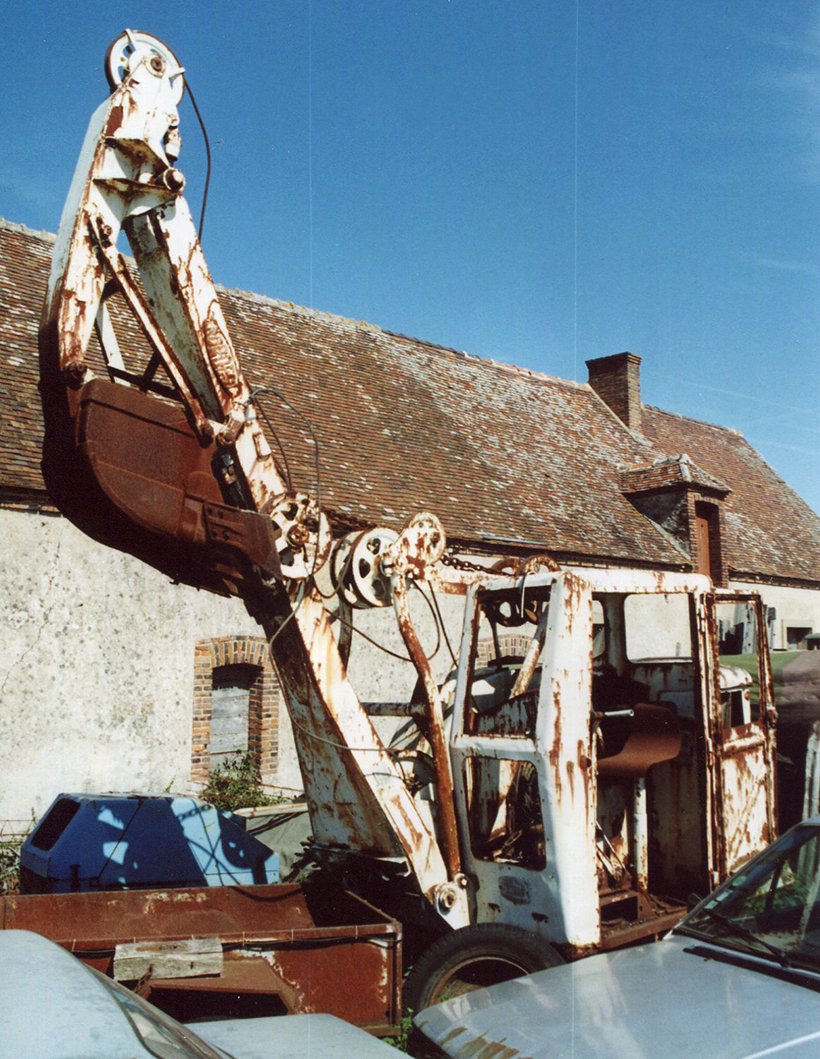
This Nordest excavator was for sale near Rouen, and is mounted on crawler tracks.
That splendid book and film, North by North West, is evoked by the views of two very different cranes. The Northwest Engineering Co of Green Bay, Wisconsin, USA, made the Model 41 around 1960, with a maximum lift of 90,000lb at 15 feet. Its Northwest-built 8×4 carrier featured a Waukesha, 255hp, six-cylinder 817ci petrol engine, with Detroit or Cummins diesel options. The crane had Continental petrol or Detroit, Murphy or Caterpillar diesel options.
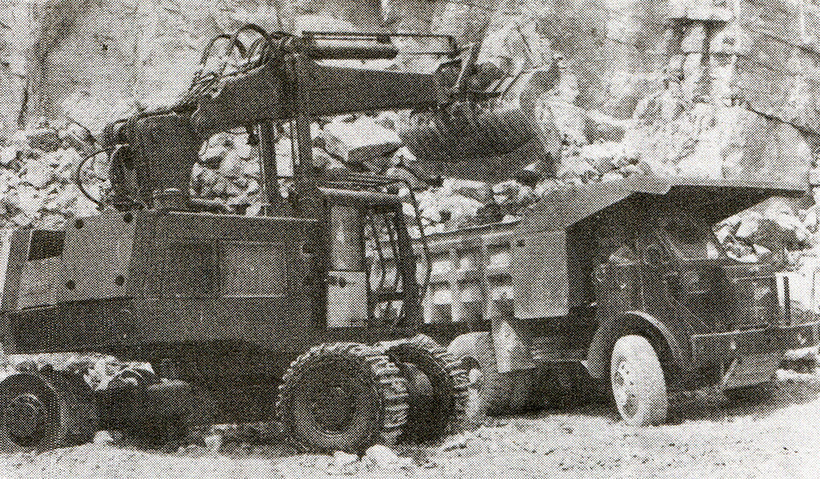
A three-cubic-yard Broyt X4 loads a Foden at Dene Quarry, Cromford in Derbyshire, for the Hoveringham Stone Co, in 1964.
The Nordest (meaning Northeast) is a French-built rope excavator on crawler tracks, that was powered by a twin-cylinder Ceres 40hp diesel. It was for sale at the same location as the Diamond T, and appeared to be in reasonable condition.
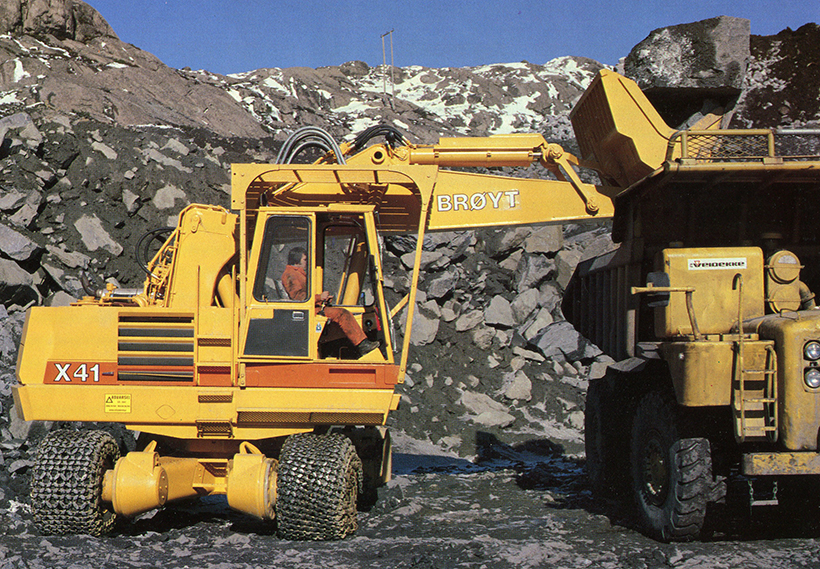
A Broyt X41 with a 179kW Volvo TDIOOA diesel.
Finally, we return to Broyt, which I haven’t featured for a while. The ability of these excavators to be raised at one end and towed between sites, was commented on. I’ve since discovered that Hoveringham towed one from bench to bench in its Dene Quarry during the 1960s, and found that it could make a considerable reduction in machine down-time.
You can subscribe the Classic Plant & Machinery magazine by clicking here



